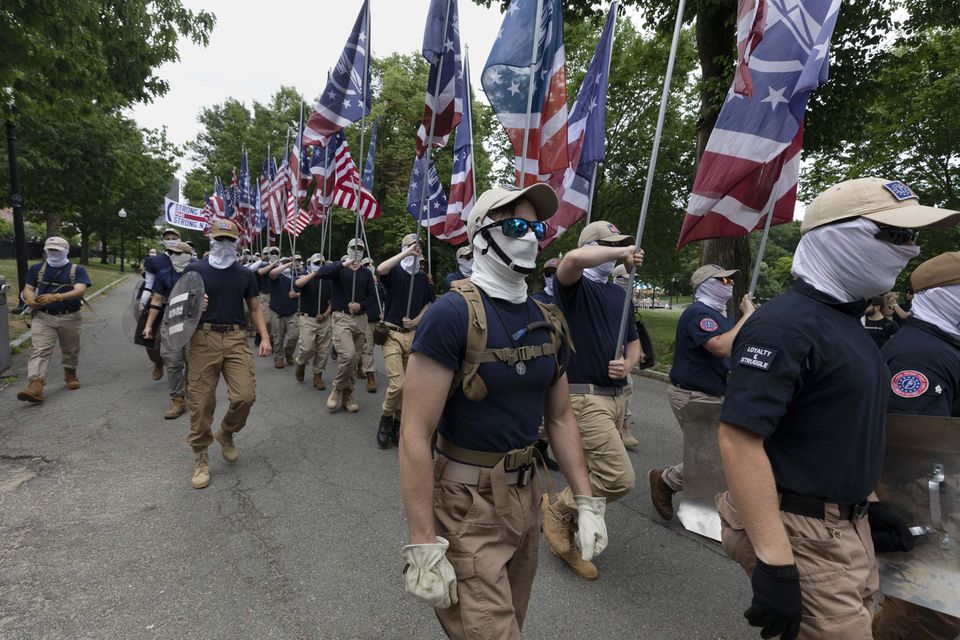Warren Montag is a professor of English and Comparative Literature at Occidental College in Los Angeles, California. He is also one of the leading specialists in the field of Althusserian studies, editor of the journal Décalages, and author of several books, including Philosophy’s Perpetual War: Althusser and his Contemporaries (Durham: Duke University Press, 2013) and The Other Adam Smith (Stanford University Press, 2014), written with Mike Hill, among others.
Montag was a member of a collective oriented to the ideas of Ernest Mandel (1976-1978) and then of the organizations Workers Power (1978-1985) and Solidarity (1985-1990), in which he served on the national committee.
Here, he is interviewed by Jimena Vergara of Left Voice and Juan Dal Maso, an Argentinian Marxist and member of the Trotskyist Fraction. His book Hegemony and Class Struggle: Trotsky, Gramsci, and Marxism was published in English last summer by Palgrave Macmillan.
*
In past interviews you raised the idea that the Trumpist Right, with or without Trump, is going to continue playing a role on the American political scene. What is the current situation of the Far Right after the overturning of Roe v. Wade?
The electoral defeat of Trump in November 2020 initially appeared to be a popular repudiation of Trumpism, a result of its embrace of the mass organizations of the Far Right, its commitment to the use of state violence against immigrants and later BLM, while vowing to protect profits, no matter how high the mortality rate from Covid. At the same time, Biden seemed to have reinvented himself as a latter-day FDR poised to implement a 21st-century New Deal that would appeal to employers and landlords, as well as workers and tenants, restoring and extending the nation’s infrastructure while rebuilding the welfare state ravaged by neoliberal reforms. The signs of a reawakening of the labor movement, and for the first time in decades the existence of a mass socialist organization, only confirmed the parallel to the 1930s. It appeared that the U.S. had turned a corner, and Trumpism was revealed as a transient aberration in U.S. history.
While Trump’s rejection of the results of the 2020 election and his decision to mobilize the Stop the Steal movement worried some observers, the integrity of the electoral process as a whole remained beyond question for most of the anti-Trump majority. Trump’s refusal to recognize the legitimacy of the election results could be dismissed as little more than another demonstration of his narcissism and, as such, unlikely to interfere with politics as usual. The assault on the Capitol on January 6, 2021, came as a shock, and the fact that the participants did not achieve their goal of halting the transition to a Biden presidency proved far less important than what it revealed: (1) the precariousness of an incoherent electoral system riddled with loopholes that functioned thanks to habit rather than law, (2) the degree to which sections of law enforcement agencies and the military (particularly the army) sympathized with the authoritarian goals of the Far Right, and (3) within little more than two weeks, the capitulation of all but a handful of the Republicans in Congress to the party’s Far Right. These developments created a dynamic that not even the arrests of nearly 10 percent of the participants in the action could stop. In fact, they contributed to the solidification of a united front between the militias (particularly the Oath Keepers) and the white nationalist street-fighting organizations (the Proud Boys, above all) that attracted a new cohort of recruits. These developments also attracted the growing “Christian nationalist” movement, whose presence encouraged the Far Right to prioritize the struggles around abortion and “homosexuality.” The Far Right is now larger, more unified, and more effective than it was before January 6, 2021.
But perhaps the most important change in the Trumpist movement, which now dominates the Republican Party, was its acceptance of the violent mass movement as a legitimate and necessary adjunct to the Stop the Steal campaign, which most party leaders had endorsed by the end of January 2021. Despite the supposed failure of the attack on the Capitol, it revealed to Republicans the weaknesses, both systemic and conjunctural, that opened a road to a dominant position in the major political institutions from which they could be dislodged only with great difficulty and which no longer depended on who voted, but on who controlled the polling places and who counted the votes. It also showed Republicans the degree to which there would be little effective opposition to such an effort and far more open support from various elements in law enforcement and the military than they ever imagined. This convinced a large majority of Republicans in Congress that there was no need to reach out beyond the base of the party. Even if Trump 2020 was a lost cause, there was a clear pathway to the institutionalization of the rule of the Far Right. The GOP’s alliance with the organizations like the Proud Boys and the Oath Keepers had awakened its primal instincts and showed the party what tens of millions shared with it: racism, misogyny, Christian nationalism, imperialism, the abandonment of the subaltern classes to the gospel of personal responsibility and the sanctity of private property.
Included in this great awakening was the majority of the Supreme Court. After a few tests of the public reaction to decisions blurring the distinction between church and state and later a leak of the Roe v. Wade decision a month before the official announcement, the court allowed states to outlaw abortion, even in the case of rape and even if carrying the fetus to term threatened the mother’s life. Many elected representatives said very openly that the life of the innocent unborn child must take precedence over the life of the mother. Doctors could be charged with murder or for being an accessory to murder for discussing the option of abortion with pregnant women. The court will likely allow state legislatures to prohibit the sale of contraceptives or at least allow individual pharmacists to refuse to sell them. This decision rejects precedent and imposes a decidedly minoritarian religious doctrine on a solid majority of the electorate; this points to the court majority’s commitment to the project of cultural counterrevolution. Other, apparently limited decisions, eclipsed by the denial of a constitutional right to abortion, assert the right of state legislatures to reject federal health and safety regulations for the protection of workers and consumers, environmental protections (including measures to slow climate change) and federal regulation of guns and gun ownership.
Finally, to address the question of Trump: he retains a loyal following of tens of millions of people, despite the evidence gathered by the January 6 Committee. His embrace of the violence of his supporters, including his refusal to denounce their threats to “hang Mike Pence,” are unlikely to alienate more than a small fraction of his movement. In the unlikely event he is charged with a criminal offense, Florida governor Ron DeSantis, who is if anything more dangerous than Trump, eagerly awaits the chance to take his place. The MAGA movement will not disappear anytime soon.
How do you see the relationship between the Far Right and the GOP? And how do you see the relationship between the Far Right and the police departments?
For those on the Left who, for different and sometimes opposing reasons, sought to minimize the significance of the rise of the Far Right and the growing importance of violence and the threat of violence in U.S. politics, the assault on the Capitol on January 6, 2021, confirmed their analysis: it was the final crisis of Trump’s ragtag army of QAnon supporters, militias, assorted neo-Nazi groups and street-fighting organizations like the Proud Boys, more a collective temper tantrum than a riot, whose participants did little more than break windows and vandalize offices. Because the participants’ average age was around 40, the riot seemed like nothing more than a revolt of the “dads” who could not accept the reality of social progress.
Eighteen months later, it appears that what took place on the steps of the Capitol was merely the first skirmish in a protracted battle. Even though nearly 10 percent of the participants have been arrested, including the leading figures of both the Proud Boys and the Oath Keeper militia, both groups have resumed their planned expansion. The Proud Boys, in particular, have grown and spread into new areas of the U.S., and they regularly attack abortion rights protests, Pride marches, and school boards to support with threats and actual violence anti-CRT activists in the campaign to purge local boards of anti-racist members. The Oath Keepers are more security-conscious but have increased their presence along the Southern Border. More importantly, the lead-up to January 6 led the two organizations to cooperate and coordinate their actions.
As I noted earlier, the power of the Far Right, a power that has yet to be openly displayed, but which is palpable, has transformed the Republican Party, just as the connection to the Republican Party has helped unify large sections of the Far Right. In the first case, the GOP no longer pretends to speak for “the silent majority.” Nor is it particularly concerned to win support for its program among a majority of the electorate. Republicans, as the Supreme Court’s recent rulings show, are increasingly willing to embrace political positions rejected by large majorities in the U.S. We can expect that the court, acting in concert with the 30 Republican-controlled state legislatures, will work to overturn federal civil rights and anti-discrimination legislation, with devastating effects on racialized minority groups and the LGTBQ+ community. Far-right organizations serve as the advance guard of the Republican Party, attempting through violence and intimidation to prevent any effective mobilization against measures that target certain communities. We should expect and prepare for a formidable effort (legal, as well as extra-legal) to shut down abortion providers in the states where abortion remains legal. It is likely to include mass mobilizations beyond far-right circles, involving churches and civic groups, as well as individual violence, including bombings, shootings, and assaults.
In 2021 the number of armed demonstrations more than doubled from the previous year. As the Supreme Court decision involving gun laws takes effect, we can expect to see a further increase in armed protests and a corresponding decrease in protests organized by the Left. The demonstrations of far-right power and their effectiveness in demobilizing resistance encourage the rightward movement of the Republican Party. The GOP supports unlimited gun rights not simply because it has an erroneous “originalist” interpretation of the Second Amendment. It does so to ensure that its mass base is armed and can forcibly take over local and state-level institutions. Such developments are made possible by an increasing tendency of law enforcement agencies at every level of government to allow far-right violence. Various organizations have documented the steady decline in police action at demonstrations when far-right groups are involved, even though violence occurs far more frequently when such groups are present.
It is also important to acknowledge that sections of law enforcement and security agencies were prepared to support Trump’s attempt to overturn the election, including elements of the Secret Service who may have attempted to prevent Pence from certifying the election by removing him from the Capitol on false pretexts. It has just now come to light that the Secret Service destroyed the records of its communications from the period January 5–6, 2021, despite having been told before the end of January 2021 to preserve all records relating to the 6th. Within the various branches of the military, especially the army and air force, the influence of the Far Right continues to grow. Republicans recently blocked a congressional investigation of their activities. The Department of Homeland Security, which includes ICE, has openly refused to implement changes to Trump-era policies concerning the treatment of unauthorized immigrants and asylum seekers. Along the border with Mexico, ICE agents work closely with heavily armed militias that, contrary to the law, capture and detain border crossers at will, under conditions that they alone determine.
During the Trump administration, the new Far Right merged or started coordinating with the traditional Far Right led by white supremacist organizations. Even though the so-called Far Right in the U.S. is very heterogeneous, the assault on the Capitol showed their capacity to organize and act together. What does the map of the Far Right look like today? And how would you characterize these groups — given that there is a debate within the international Left about whether these new organizations are strictly fascist or new phenomena?
As I mentioned earlier, there is a tendency to unification, not just in terms of organization, but also politically. Thanks to their cooperation in preparation for January 6, the Oath Keepers militia and the Proud Boys discovered that their differences were minimal. It is now unclear what the distinction is between militia-type organizations (nominally focused on “defending the Constitution”) and the groups like the Proud Boys and Patriot Front (who function as the squadistri of the MAGA movement). The anti-abortion movement will likely provide further opportunities for joint work and political and strategic convergence, and it will facilitate the integration of what is now called Christian nationalism or white Christian nationalism into the Far Right.
It is extremely difficult to assign this movement, which is still information and whose heterogeneity is such that it could suffer major fractures along a number of different lines, to some preexisting category based on a checklist of characteristics. This approach has led some observers to narrowly define fascism according to the conditions of its emergence in 1920s Italy or Germany. Doing so portrays fascism as unlikely to be repeated, in which case there is no point in looking for it now. In addition to the theoretical and historical questions raised by this position, it tends to be associated in the current conjuncture with strategic and tactical decisions: if the current movement is fascist, then the Left must enter into a popular front–type alliance with all “democratic” forces (i.e., the Democratic Party), which requires putting aside or subordinating the struggles and objectives that would alienate these forces in the face of the overwhelming danger of fascism. The history of the 20th century, however, from the struggle against fascism in Spain to the tragedy of Unidad Popular in Chile, has shown that holding back the workers’ movement and, today, struggles against racism and for reproductive rights, as well as the rights of the LGTBQ+ community, necessarily demobilizes and weakens the forces fighting fascism or dictatorship.
Another persistent theme in this discussion is the notion that because far-right mobilizations cannot be characterized as fascist, we should regard the participants not as “enemies” but as misguided people reacting irrationally to the devastation caused by neoliberal policies in the U.S. Rather than fight them, we should explain to them that their self-interest lies in bringing about socialism. I cannot even begin to discuss the problems with any such position, theoretically and practically. Instead, I will simply ask why this pedagogical model does not apply to participants in fascist movements in the period before the consolidation of a fascist regime. Fascist or not, it may at times be possible to reach part of the Far Right’s periphery, but this can only occur if the balance of forces shifts in favor of the Left, that is, the working class and the popular movements, through their combined struggle. To change what the Far Right thinks, we must first change what they do and what they can do.
The current Far Right, no matter how we characterize it, certainly exhibits some of the characteristics associated with fascism before it came to power, in Italy 1919–21 and Germany 1929–33. The existing Far Right has, very consciously, adopted the strategic repertoire of fascism during these periods: confronting and defeating the Left in the street and taking the struggle to Left strongholds (e.g., Berkeley) to deny it freedom of movement, while establishing the Far Right’s ability to go where it pleases (the Proud Boys have taken the chant associated with the Left and anti-racist movements and made it the slogan of their triumph: “Whose streets? Our streets!”). But it is not yet clear whether this movement will move in the direction of a fascist regime or become a variant of authoritarian (white, Christian) neoliberalism. This will be determined by the power of the resistance to the consolidation of quasi-permanent Republican rule through legal and extra-legal means. In the absence of effective resistance, we should anticipate a period of political violence, much of it carried out by nonstate forces, with the blessing of the state, and an attempt to crush the Left and labor and popular movements. The frequency of armed demonstrations should be understood as a warning, and the court’s decision allowing private individuals to purchase and carry military-grade weapons, if declared legal by state legislatures, further increases the likelihood of political violence. What the Left does over the next two years will be decisive.
You also stated in the past that social movements had to be independent of Biden’s electoral campaign. How is the class struggle today affected by the relationship between social movements, the labor movement, and the Democratic Party?
It should be clear to everyone at this point that the Democratic Party cannot respond to, letting alone stop, the still ongoing offensive waged by the Republican Party, goaded ever further rightward by its mass base and its far-right vanguard, a well as a Supreme Court bent on undoing nearly a century of laws establishing the rights of workers, racialized minority groups, women, and the LGBTQ+ community. Not only have the Democrats failed to pass any of the legislation that formed the bedrock of the 2020 campaign, they cannot even agree to suspend the filibuster, which has become one of the most effective obstacles to democratic decision-making and majority rule. The party leadership appears not to understand the Republican strategy to take and hold power, or to confront the fact that the power of the Far Right continues to grow, and that sections of law enforcement and the military are openly insubordinate. They do understand, however, the threat to their credibility posed by the party’s left wing, having recently decided to primary Rashida Tlaib, one of its leading figures. And while the hearings concerning the conduct of Trump, his cabinet, staff, and chief advisers have revealed some significant facts concerning Trump’s intentions and actions, it is unlikely that he will be prevented from running in 2024, despite his attempts to steal the election and prevent the certification of Biden’s victory.
Nevertheless, there will be enormous pressure on labor and all other movements to prioritize the 2022 and 2024 elections above all else, and postpone the mobilizations that are so badly needed but that are too often regarded as of secondary importance. In fact, it is highly likely that the Democratic Party leadership will insist on downplaying issues it defines as divisive or alienating to the “average voter” (universal healthcare, defunding the police, climate change) while paying a disproportionate amount of attention to Trump and the (admittedly ample) lunatic fringe of the Republican Party, figures like Josh Hawley, Marjorie Taylor Greene, and Lauren Boebert. More importantly, however, the November elections coincide with a whole series of battles as draconian anti-abortion laws come before state legislatures, precisely at the moment when mass action is most necessary. Similarly, it is critical that the labor movement maintain the momentum of its organizing campaigns and extend the power of individual unions to strike and to support each other’s struggles. By participating in the struggles of popular movements, the labor movement can help create a unified force that can stop the Far Right and advance the interests of the working class. Increasing the power of the organized working class in an alliance with the diverse organizations of the oppressed is the only way to build a socialist Left that can challenge capitalism’s destruction of the environment, its wars, its disregard for human life, the hatred it fosters, and the violence it feeds.











